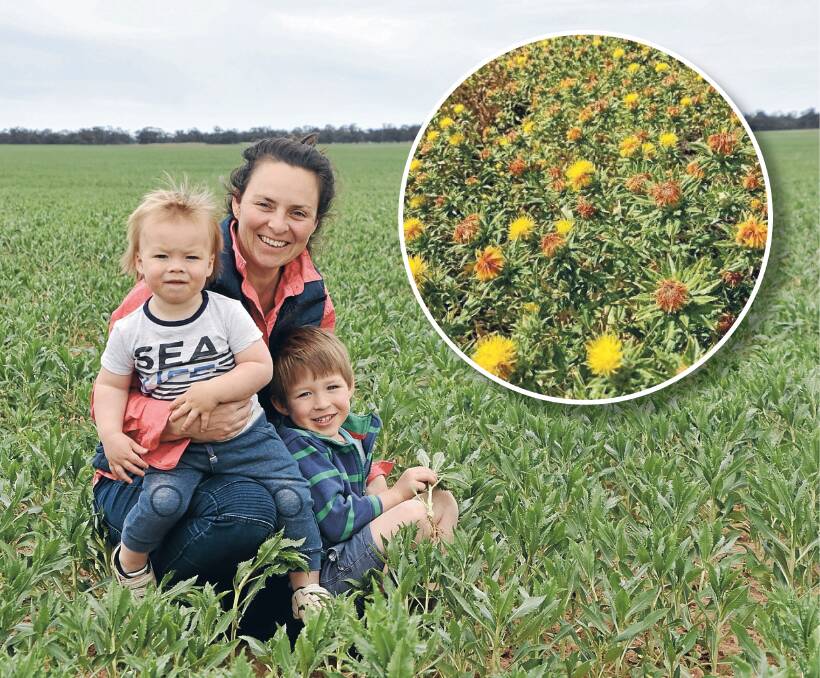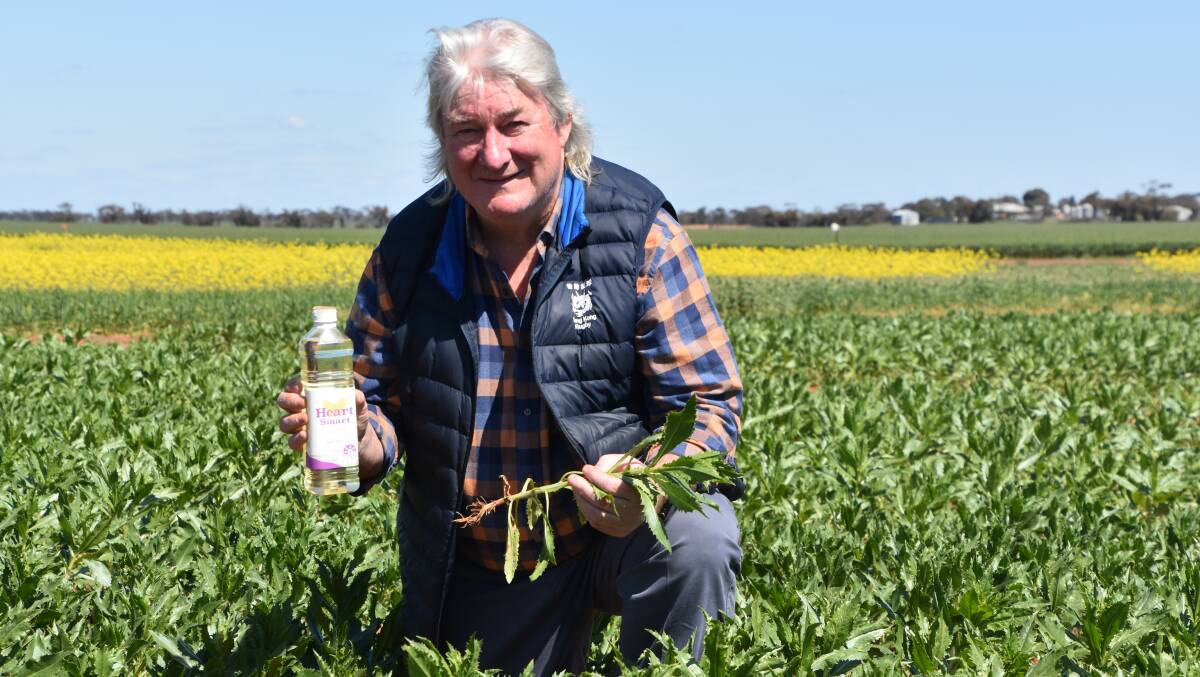
Farmers with some of the harshest soil types are trialling a crop used to make machinery oils and products like pacemakers and fibre optic power pole boxes.
Subscribe now for unlimited access to all our agricultural news
across the nation
or signup to continue reading
Super high oleic safflower is being commercially grown in Victoria and a new delivery site set to open for this year's harvest could encourage farmers to turn to the alternate crop.
SHO Safflower was developed by the Grains Research and Development Corporation and CSIRO and produces more than 90 per cent oleic acid in every litre of oil produced - a figure which has growers interested.
It is being marketed for its industrial uses due to the biodegradable and renewable oil it produces, and is also being used by a Queensland company to make an omega-9 cooking oil.
Mallee farmer De-Anne Ferrier, Jill Jill, said her family turned to the crop last year on their Wirrabilla property due to its performance in mid to low-rainfall environments, and its ability to grow in sodic and saline paddocks.
"It has a taproot that can open up the soil to access water down deeper and hopefully help the next crop too," Mrs Ferrier said.
The Ferriers planted 100 hectares of the oil seed crop in early May, which last year yielded them one tonne per hectare at $650 per tonne, returning a gross margin of more than $350 per hectare.
In comparison, their canola crop yielded an extra half a tonne per hectare.
"Given our dry start this year, canola wasn't an option for much of the farm," Mrs Ferrier said.
"But we kept a tough paddock coming out of two years of pasture earmarked as safflower.
"Safflower sits there for a long time not doing too much but now the temperatures are warming up it's starting to kick into gear and develop."
The dry Mallee conditions present the perfect opportunity for the crop to grow, and it can be sown on dry-land and irrigated paddocks.
"It's nice to have a new crop... and hopefully help diversify our farming system in the low-rainfall Mallee environment," Mrs Ferrier said.
It is being developed and marketed by Melbourne company Go Resources, which hopes farmers will plant 250,000 to 300,000 hectares annually of SHO Safflower within six years.
About 4500 hectares of the crop is planted across the eastern seaboard this year, and a trial patch of the crop was on show at the Birchip Cropping Group's Watchupga trial site in northern Victoria during a members-only event last week.
Major industrial uses for the super high oleic safflower oil include being used to make lubricants, emulsifiers and transformer oils.

Its research and development lead David Hudson said the crop had not been grown in any large volume - except for conventional safflower for the birdseed market - since the early 1980s.
"We contract farmers to grow the crop and then we manage the delivery of the grain from the farmgate to storage facilities and then on for crushing," he said.
"An advantage of the crop, unlike canola which has to be windrowed prior to harvest, is that it can be direct headed."
He said the company was in the final stages of establishing a Victorian delivery site in the Wimmera/Mallee region before the crop would be harvested in early summer.
"The oleic oil is being used for producing bio-lubricants, transformer oil, cosmeceuticals, and food products," he said.
"It's an increasing demand because the industry globally wants to move away from the use of environmentally-damaging fossil fuels and palm oils and this offers an alternative."
Mr Hudson said market analysts believed the products made up about 10pc of the global lubricant market.
"That equates to a value of around $22 billion per annum globally," he said.



